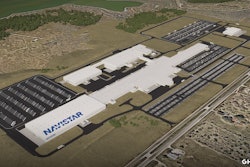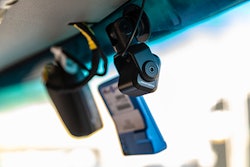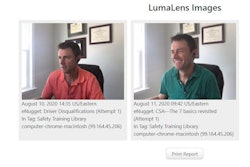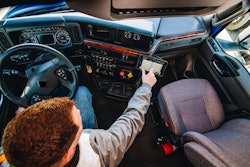We talk about the new normal as if there was an old normal. In freight, change occurs daily. It always has. The media may have a broader set of technologies to write about today but continuous improvement and continuous change has always been part of hauling freight.
 Rick Mihelic is the director of Emerging Technology Studies for the North American Council for Freight Efficiency (NACFE)
Rick Mihelic is the director of Emerging Technology Studies for the North American Council for Freight Efficiency (NACFE)The purpose of freight businesses is to be profitable. In a highly competitive industry like freight, standing still is never an option. Truck manufacturers and their supply base constantly are developing new products to win market share and are constantly improving existing products to keep market share. The whole concept of continuous improvement is imbedded in the DNA of truck makers.
Fleets similarly are constantly searching for and implementing new ways to be competitive, to waste less and earn more in a complex business environment.
Regulators also are continually evaluating improvements to better guarantee safety for truckers, automobiles and pedestrians. They are constantly researching improving asset longevity like roadways, improved infrastructure to facilitate freight movement, improved air quality and more efficient ways to better utilize limited public funding.
Even consumers, sitting at home during COVID-19, are perpetually pushing for changes through how they conduct business, with growing emphasis on rapid home delivery, e-commerce ordering and even return policies.
The “new” normal for freight may just be the extension of the “old” normal. The only constant in freight is change.
It’s an exciting time to be in the freight industry. Never before have we faced such a diverse set of technologies to facilitate change, and perhaps never before have there been so many challenges facing the industry.
- Evolving regulatory standards
- The roller coaster economy over 20 years
- Catastrophes and endless conflicts
- Rapid innovation
- Increasing pace of technology obsolescence and retirement
- Immense VC investment in trucking and manufacturing for trucking
- The internet of things and e-commerce
- Big data
- Attention to sustainability
- Growing corporate emphasis on sustainability
- Changing driver and technician demographics
- Automation trends
Freight, as an industry, always has stepped up to challenges. The recent response of trucking and the supply chain to COVID-19 shortages and demands is just the latest admirable demonstration. Freight haulers are typically the first into disaster areas bringing much needed supplies. Hurricanes, earthquakes, fires, floods – they are there.
Manufacturers of trucks and truck components have been in nearly continuous change since the 1990’s on environmental performance improvements through regulations. Each new challenge requiring greater reduction of particulates and greenhouse gases has been accomplished. The industry has a significant track record of successfully facing new, more stringent requirements while remaining profitable.
Fleets have similarly faced these new regulations and adapted to the changes, finding ways again to be profitable while also improving sustainability for their companies and customers.
We tend to have a bias towards pushing back on change. It’s common to see new regulations as too complicated, too expensive or too onerous. But the freight industry is never static. The industry is hugely innovative and has extremely capable people at all levels, from drivers and technicians, back-office workers, operational managers, and executives.
Change is what they successfully do daily. That is freight’s “normal.”
Rick Mihelic is NACFE’s Director of Emerging Technologies. He has authored for NACFE four Guidance Reports on electric and alternative fuel medium- and heavy-duty trucks and several Confidence Reports on Determining Efficiency, Tractor and Trailer Aerodynamics, Two Truck Platooning, and authored special studies on Regional Haul, Defining Production and Intentional Pairing of tractor trailers. President of Mihelic Vehicle Consulting LLC he has 38 years’ experience in the trucking and aerospace industries including 20 years in commercial vehicle development for PACCAR and Peterbilt.










